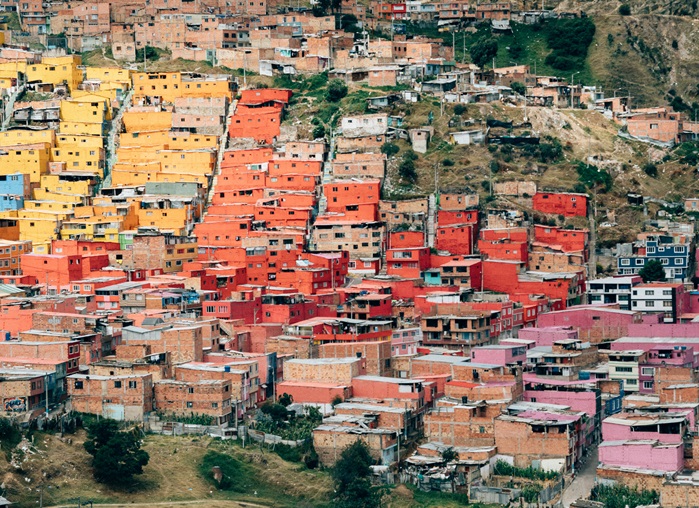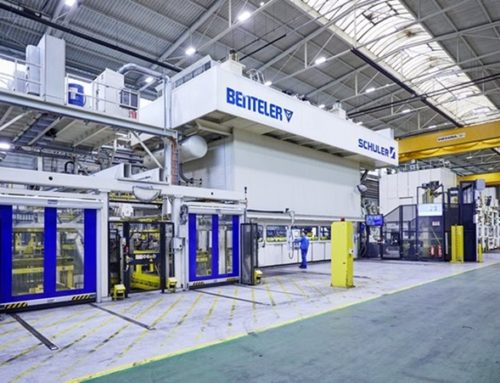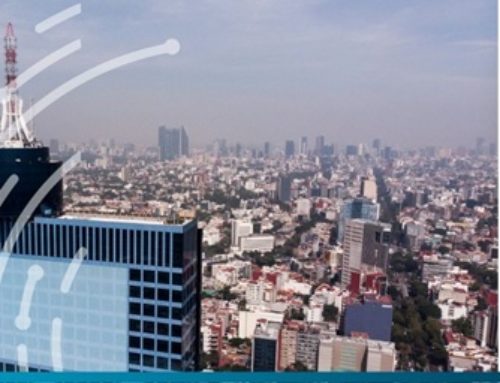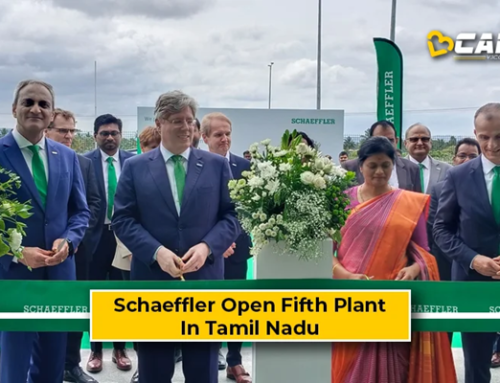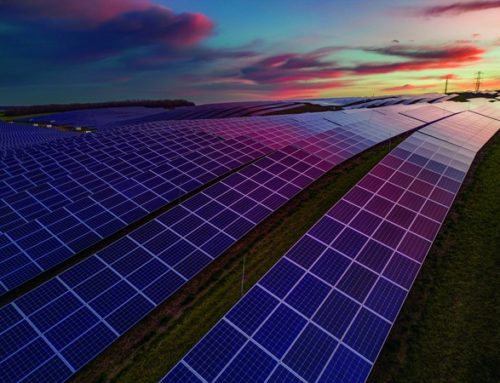1. Bolstering Trade in Latin America: An In-depth Look at the Exports Minister’s Landmark Visit
In an unprecedented move aimed at bolstering international trade relations, the Exports Minister embarked on a strategic visit to Latin America. This visit, a first of its kind, is set to unlock billions worth of exports and significantly boost trade ties between our nation and the Latin American countries. The journey is not just about numbers, but a testament to the growing global interconnectedness and the immense potential that lies within these robust economies. This article delves into the details of this landmark visit, the opportunities it presents, and the potential impact on our export industry.
Objectives
The key objectives of the Exports Minister’s visit to Latin America could include:
1. Strengthening Trade Relations:
The primary objective is to strengthen trade relations between our country and the nations of Latin America. This involves discussions on reducing trade barriers and fostering an environment conducive to free trade.
2. Unlocking Export Potential:
The visit aims to unlock billions worth of exports. This could be achieved by identifying new markets, promoting our country’s products and services, and negotiating trade agreements that benefit our exporters.
3. Promoting Investment:
Another key objective could be to attract investment from Latin America into our country. This involves showcasing our country’s investment-friendly policies and potential sectors for investment.
4. Cultural Exchange:
The visit also serves as an opportunity for cultural exchange, which can help in building strong and long-lasting relationships.
5. Addressing Trade Issues:
The visit could also aim to address any existing trade issues between our country and the nations of Latin America, paving the way for smoother and more efficient trade.
Countries
The Exports Minister’s visit to Latin America includes the following specific countries:
1. Dominican Republic:
The minister has signed a Government-to-Government agreement with the President of the Dominican Republic that will open access to a pipeline of infrastructure projects worth over £2 billion.
2. Colombia:
While in Colombia, the minister will also sign a letter of intent, paving the way for a Memorandum of Understanding with the National Institute for Drug and Food Surveillance (INVIMA), helping to open opportunities for British Healthcare and Pharma companies.
3. Bolivia:
The Exports Minister will launch the British-Bolivian Chamber of Commerce and witness the signing of a contract to supply 3000 British solar panels to BFC’s solar farm project.
2. USD 18 Billion by 2028: A New Era for Indonesia-Vietnam Trade Relations
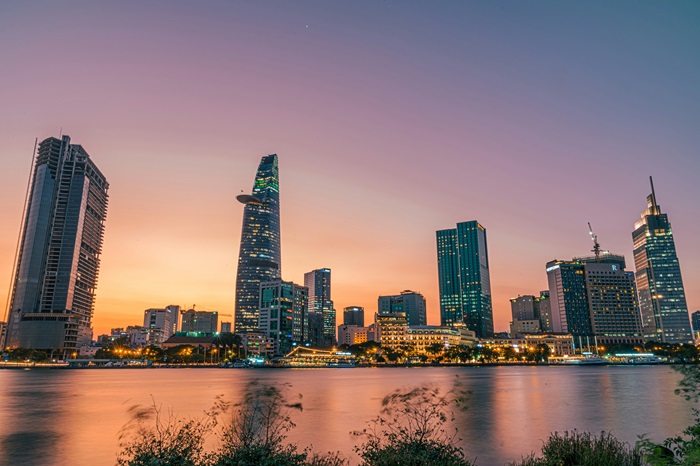
Tron Le via Unsplash
In an era of increasing economic interdependence, two Southeast Asian powerhouses, Indonesia and Vietnam, are setting a new benchmark. With a shared vision of prosperity and growth, these nations have set an ambitious target to bolster their bilateral trade to a staggering USD 18 billion by 2028. This move signifies not only their mutual economic aspirations but also the strengthening of diplomatic ties and regional cooperation. The following article delves into the strategies, potential challenges, and the profound impact this target could have on the economies of both nations and the Southeast Asian region as a whole.
Sectors
The growth in bilateral trade between Indonesia and Vietnam is being driven by several key sectors:
1. Energy:
Both countries are focusing on strengthening cooperation in the energy sector.
2. Health:
The health sector is another area where both countries are looking to enhance their cooperation.
3. Tourism and Education:
These are also sectors where both countries are working to strengthen their ties.
4. Maritime:
In the maritime sector, there is a push to enhance cooperation to address illegal, unreported, and unregulated (IUU) fishing.
5. Security:
There is a focus on strengthening cooperation to address increasing transnational crimes, especially cases of human trafficking related to online scams.
6. Defense:
The defence sector is also seeing increased cooperation, with the 3rd Defence Policy Dialogue and the first Air Force Staff Talk between the two countries’ air forces to be held this year.
7. Investment:
There is a high interest in two-way investment, therefore, a conducive investment climate is needed.
8. Manufacturing and Construction:
Vietnam’s machinery and equipment exports contribute to Indonesia’s industrial expansion, particularly in sectors like manufacturing and construction.
9. Fisheries and Infrastructure Construction:
Indonesia’s investments in Vietnam in sectors such as fisheries, infrastructure construction align with Vietnam’s priorities.
10. Renewable Energy, High Technology, and Digital Transformation:
These are also sectors where Indonesia is investing in Vietnam.
These sectors are not only contributing to the economic growth of both countries but also fostering a stronger bilateral relationship. It’s a testament to the interdependence of emerging economies in the region.
Achieving the ambitious bilateral trade target of USD 18 billion by 2028 between Indonesia and Vietnam is not without its challenges. Here are some potential obstacles that both countries need to address:
Obstacles
-
Trade Barriers:
To achieve this target, both countries need to continue to reduce trade barriers. This includes tariffs, quotas, and regulations that may hinder trade between the two countries.
-
Food Security:
Both countries need to expeditiously conclude agreements on food security. This involves ensuring the availability, access, and proper utilisation of food resources.
-
Optimisation of Joint Committee:
The role of the Joint Committee on Economic, Scientific and Technical Cooperation (JC-ESTC) needs to be optimized. This committee plays a crucial role in addressing issues related to the trade relations between the two countries.
-
Halal Certification:
Indonesia is an Islamic country with the world’s largest Muslim population, and the Indonesian government is quite stringent when it comes to Halal regulations. All food, beverages, pharmaceuticals, cosmetics, chemicals, and organic items sold in Indonesia must have Halal certification. This could pose a challenge for Vietnamese exporters, especially those with products that have not been granted Halal certificates.
-
Market Demands:
The Indonesian market is less demanding than the US, EU, or Japan. However, understanding and meeting the specific demands of the Indonesian market can still pose a challenge for Vietnamese exporters.
-
Investor Protection:
Indonesia has requested protection for Indonesian investors who have invested in Vietnam. Ensuring a conducive investment climate and investor protection can be challenging but is necessary to encourage more investments.
-
Penetration of Indonesian Agricultural Products:
Indonesia has called for attention to the delays in penetration of Indonesian agricultural and fruit products in the Vietnamese market. This indicates a need for improved market access for these products.
Addressing these challenges effectively will be key to achieving the bilateral trade target and fostering stronger economic ties between Indonesia and Vietnam.
3. Hyundai Mobis Ignites the EV Revolution: A $128M Battery Plant in Navarre, Spain

Sam Williams via Unsplash
In a significant stride towards a sustainable future, Hyundai Mobis, a global auto parts manufacturer, has recently announced its plans to invest $128 million in a new Electric Vehicle (EV) battery plant. This state-of-the-art facility, set to be located in the industrious region of Navarre, Spain, marks a pivotal moment in the company’s expansion into the European market. This article delves into the details of this landmark announcement, exploring its potential impact on the EV industry, the local economy, and the broader push towards green energy solutions.
Plant details
The new Hyundai Mobis EV battery plant in Navarre, Spain, boasts several key features:
Size and Capacity:
The plant covers an area of approximately 150,000 square meters, with a building area of 50,000 square meters. It is projected to produce up to 360,000 battery systems annually.
Investment:
Hyundai Mobis plans to invest approximately 170 billion KRW (about 120 million euros) by 2030 in the Spanish plant.
Advanced Technology:
The plant will include advanced electrification technology. It will serve as a benchmark model of electrification specifically for global clients.
Strategic Location:
The plant is strategically located in Navarre, Spain, which is the second largest location for automotive production in Europe after Germany. The factory is located just 14 kilometres away from a Volkswagen factory, where the battery systems produced at the Mobis plant will be installed in Volkswagen’s next-generation EV platforms.
Global Expansion:
This plant marks Hyundai Mobis’s first dedicated facility in Western Europe, aimed at supplying global client Volkswagen. It represents a significant strategic entry into Western Europe for the company.
These features position the plant as a significant player in the EV industry and a major contributor to the global push towards sustainable energy solutions.
4. Transforming Europe’s Tech Landscape: Amazon’s €700 Million Investment in AI and Robotics
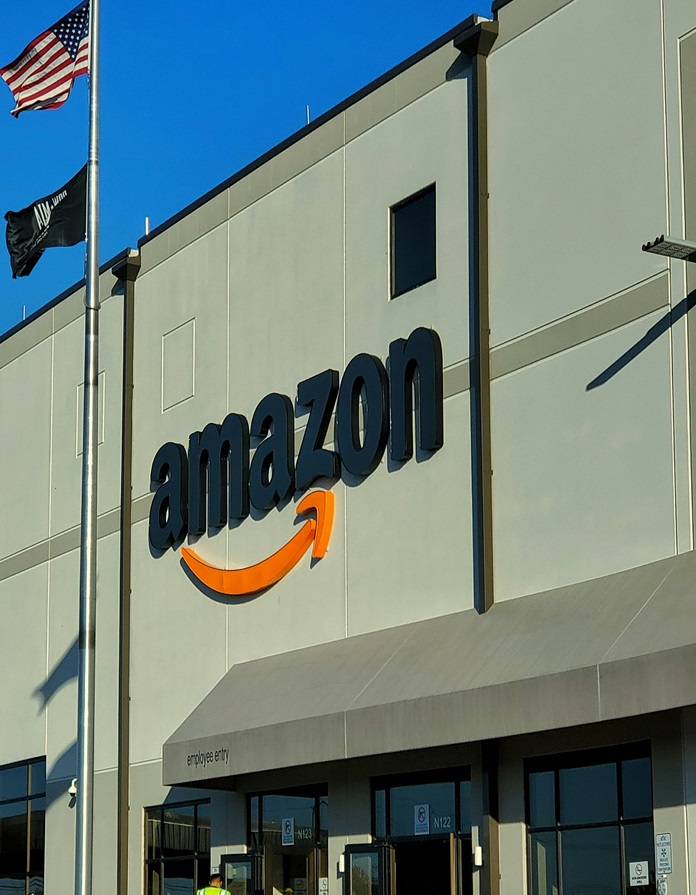
In an era where technology is reshaping industries and economies, Amazon, the global e-commerce titan, has announced a groundbreaking investment of €700 million in robotics and AI-powered technologies across Europe. This substantial investment underscores Amazon’s commitment to innovation and its strategy to stay at the forefront of the digital revolution.
The investment aims to enhance operational efficiency, improve customer experience, and create a multitude of high-tech jobs, thereby contributing significantly to the European economy. This article delves into the specifics of this investment, its potential impact, and what it signifies for the future of technology in Europe.
Focus Areas
The key areas of focus for Amazon’s €700 million investment in robotics and AI-powered technologies across Europe are as follows:
1. Innovation Lab:
Amazon’s Innovation Lab, established in 2017, serves as the hub for the global Mechatronics & Sustainable Packaging team. This lab is one of Europe’s most advanced centres for robotic innovation.
2. Advanced Technologies:
The investment is focused on the development and installation of over 1,000 new robotics and AI-powered innovations throughout Amazon’s European fulfilment centre (FC) network. These technologies include item sorters, pallet movers, and automated guide vehicles.
3. Employee Support:
These cutting-edge technologies actively support Amazon employees in their roles, enhancing over 50,000 jobs in FCs across Europe.
4. Customer Experience:
The investment also aims to improve the customer experience. In 2023, Amazon was able to deliver to Prime members at the fastest speeds ever globally, with more than seven billion units arriving the same or next day.
5. Training and Public Engagement:
The lab serves as a training centre for Amazon Robotics operators and a testing ground for start-ups receiving funding and guidance through the Amazon Industrial Innovation Fund. Starting in 2024, the lab will be open for public tours.
This investment signifies Amazon’s commitment to innovation and its strategy to stay at the forefront of the digital revolution.
5. ASEAN Surpasses China in Manufacturing FDI

Moughit Fawzi via Unsplash
In a significant shift in the global manufacturing landscape, the Association of Southeast Asian Nations (ASEAN) has surpassed China as the leading destination for Foreign Direct Investment (FDI) in manufacturing. This development marks a pivotal moment in the economic dynamics of the Asia-Pacific region.
The ASEAN bloc, known for its vibrant economies and strategic location, has been steadily gaining prominence on the world stage. Its rise to the top spot for manufacturing FDI is a testament to the region’s robust growth, favourable business environment, and the strategic initiatives undertaken by its member nations.
This article delves into the factors that have contributed to this landmark transition, the implications for global manufacturing, and what the future holds for ASEAN and China in the ever-evolving economic landscape.
Key Industries
The key industries driving Foreign Direct Investment (FDI) in ASEAN are:
1. Manufacturing:
The manufacturing sector has seen a robust upturn, with strong investment in industries such as electric vehicles (EVs), electronics, biomedical, and pharmaceuticals. The diversification of manufacturing supply chains by multinationals is a key driver for rising FDI inflows into Southeast Asia.
2. Finance and Banking:
This sector remained the largest FDI recipient industry with growth underpinned by ASEAN and foreign banks picking up investment and multinational enterprises (MNEs) in banking resuming their regional expansion plans.
3. Digital Economy and Industry 4.0 Activities:
Services industries associated with the rapidly growing digital economy and Industry 4.0 activities have been major industry drivers.
4. Energy Transition:
Sectors related to energy transition have seen increased interest.
5. Wholesale and Retail Trade:
These sectors are among the key drivers of strong investment trends.
6. Real Estate and Construction:
Almost 85 per cent of the outflows were funnelled into industries such as real estate, and construction activities within ASEAN.
6. Singapore property developer bets big on Cambodia
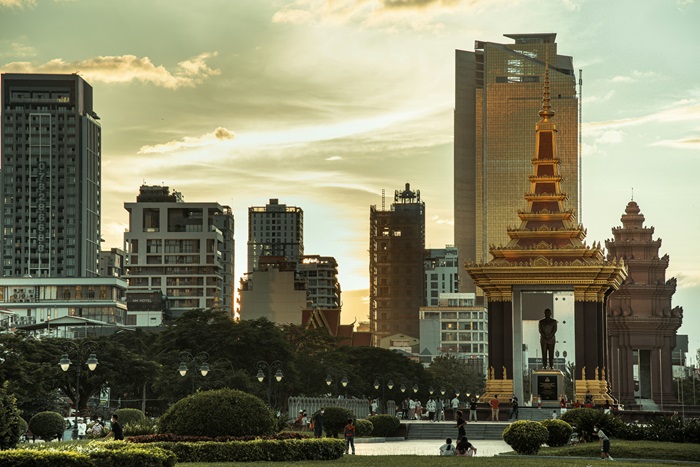
Roth Chanvirak via Unsplash
In the dynamic landscape of global real estate, one trend that has been gaining significant traction is the increasing investment by Singaporean property developers in Cambodia. This article delves into the strategic moves of these visionary developers who are betting big on the promising Cambodian property market. We’ll explore the factors driving this trend, the potential rewards, and the challenges that lie ahead. Join us as we uncover the story of Singapore’s property magnates turning their gaze towards the burgeoning opportunities in Cambodia.
Specific Projects
1. Marum Estate by Sir Stamford Raffles Group (SSRG):
This is a flagship project of SSRG, a renowned Singapore-based real estate developer. The Marum Estate is a self-contained township located in Kandal province, just south of the capital, Phnom Penh. The development spans an impressive area, roughly the size of 35 to 40 football fields, and offers a diverse range of offerings including 642 landed residences, 259 shophouses, healthcare facilities, and educational institutions. The project broke ground in October 2023 and is expected to be completed by 2030.
2. Aeon Mall by UOL Group:
UOL Group is a Singaporean property developer that has established a number of projects in Cambodia, including the $1 billion Aeon Mall in Phnom Penh.
3. The Gateway by TA Corporation:
In 2016, TA Corporation launched its first mixed-use real estate Cambodian project, The Gateway. The company had earlier developed and completed a 21 unit residential project, Serene Villa, in Cambodia under a joint venture with a local Cambodian partner.
These projects highlight the significant investment and confidence that Singaporean developers have in the Cambodian property market.
Featured image Random Institute via Unsplash

